
By Lê Việt Dũng
In a world dominated by mass production, handmade ceramics stand out as a unique blend of intricate designs and meticulous craftsmanship. One community in Việt Nam is keeping that ancient tradition alive.
"I'm really amazed by how handmade ceramics here can thrive in this modern world," said tourist Oliver Brandon.
"They are a perfect blend of arts and crafts."
 |
| A view of Thanh Hà from above. The town has a ceramic-making tradition that spans over 500 years. — VNA/VNS Photos Lê Việt Dũng |
Brandon has been in Việt Nam for more than three years, taking photos of different artisanal products in every corner of the country. He has explored the finer points of everything from knifemaking in Vĩnh Phúc to woodworking in Bắc Ninh in the North, "but how they make things from clay in this village is something very unique, very different".
The village that Brandon was talking about is Thanh Hà, nestling on the bank of the Thu Bồn River in the south central province of Quảng Nam, and boasting a five-hundred-year history of pottery.
According to its elderly residents, the ancestors of eight family clans migrated south to Quảng Nam and founded the village in the 16th century. They built their first pottery kilns in Thanh Chiếm Hamlet, a site close to the river for the ease of clay mining, and began to make ceramics for a living.
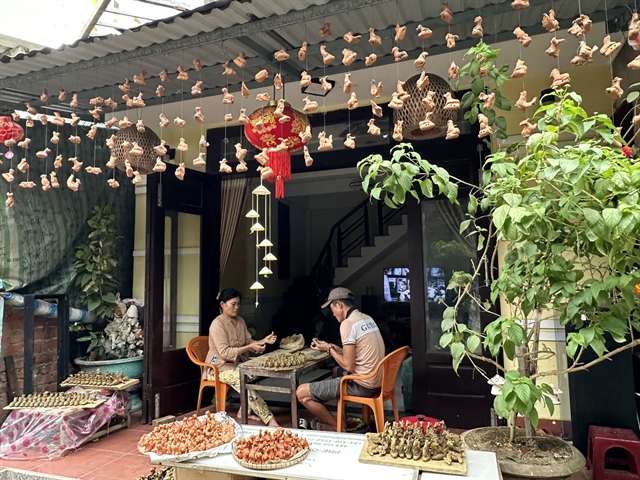 |
| A family making con thổi. These ceramic whistles make a low and hollow sound when blown gently. — |
Their business had its heyday between the 19th and 20th centuries thanks to the boom of traders using sampans to transport their products to distant marketplaces.
The rise of plastic household utensils in the late 20th century, however, gradually eroded artisanal ceramics and put the potters in a tight spot. Many switched to making bricks and tiles to stay in business. Others tried new ways of shaping clay to attract new customers.
And con thổi, a ceramic toy animal figurine serving as a whistle that makes sound when blowing, was invented for that very reason. The zoomorphic toys have become so popular that at least 37 families in the village keep crafting con thổi up until now.
"They are not just making functional things. They are making things that are functional and beautiful," said Brandon.
The traditional ceramic-making process is long and laborious, yet the one that young potter Trần Thị Tuyết Nhung, 25, has dedicated years to learning and preserving. Her family holds on firmly to the art of handcrafting as they believe a human touch makes every creation characterful and unique.
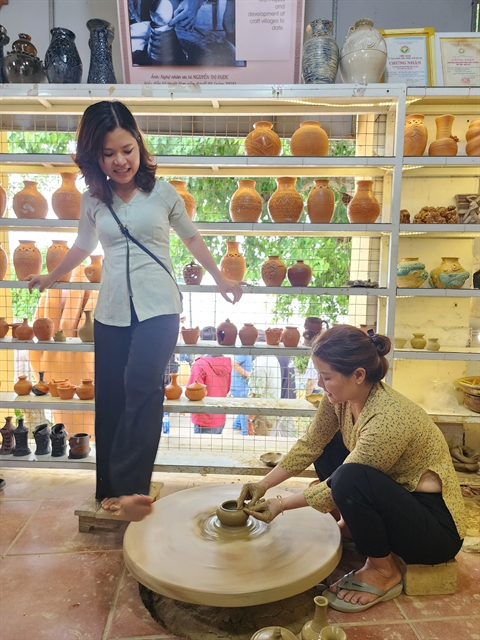 |
| Nhung, as a thợ đẩy, turning the pottery wheel by her foot while her mother was forming the clay ball into a pot. |
"Each piece is individually handmade and only one of its kind. No two pieces are exactly alike," said Nhung.
The first step in making ceramics is clay preparation. In the past, potters mined their earthern material from local sources in Thanh Chiếm Hamlet and several nearby sites. Those sites were abundant in yellow clay - a sticky material that is a top choice for pottery. Now they buy the clay from suppliers elsewhere.
Once potters get the clay, they wedge it to make sure it is homogenous and free of air bubbles. This step is particularly important as the presence of air pockets in the clay could result in cracks and holes in projects when they are exposed to the extreme heat of a kiln.
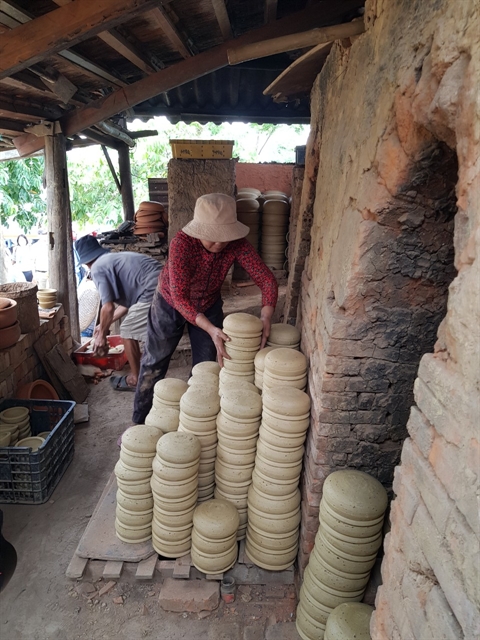 |
| Potters place completely dried pots next to a kiln. |
After the clay is properly prepared, a worker called thợ chuốt shapes it into a designed form on a potter's wheel with the help of another worker called thợ đẩy, whose job is turning the wheel regularly. Then they leave their greenware in the sun to dry.
When the drying process has been completed, the ceramic materials are glazed and put into a kiln for baking. They then undergo the extreme heat of the kiln until a translucent smoke billows out of its vent, indicating that the step has finished. The well-baked pieces of pottery can now be taken out of the kiln and ready for use.
"It takes more than 24 hours to bake glaze-coated products in wood-fueled kilns, whereas in electric kilns it's around 16 hours," said Nhung.
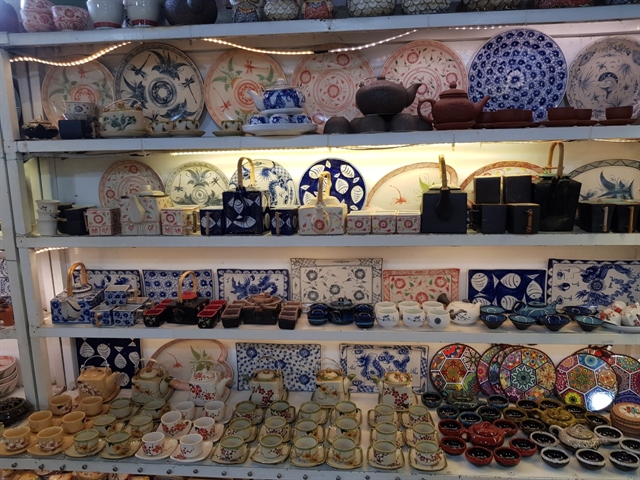 |
| Ceramic products made by Nhung's family. |
Superior craftsmanship combined with a traditional technique passed down through generations has made a name for Thanh Hà's ceramics as products of elegant styles and wonderful functionalities. It is said that its vases can extend flowers' freshness for up to one week and its pots can make foods taste much better.
After the COVID-19 pandemic, tourists began to flock back to the village in large numbers to see local potters at work and get some of their exquisite pieces of pottery. All the revenues from ticket sales have been set aside for revamping the village and supporting the potters.
"I've got some ceramic whistles for my kids and a beautiful vase for my wife," said Brandon. — VNS
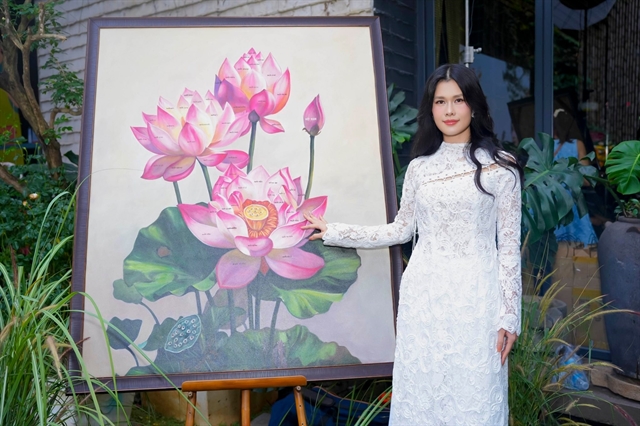

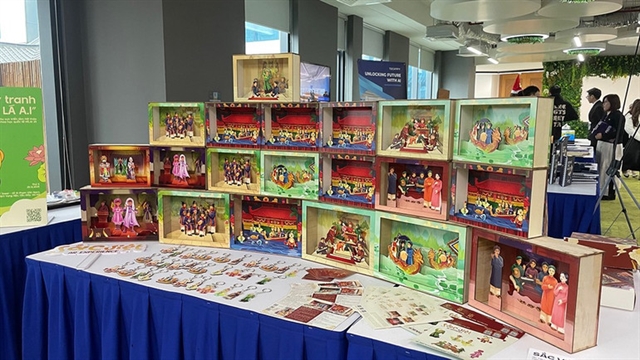


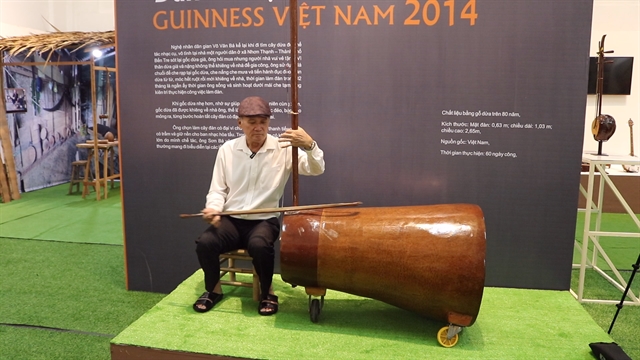

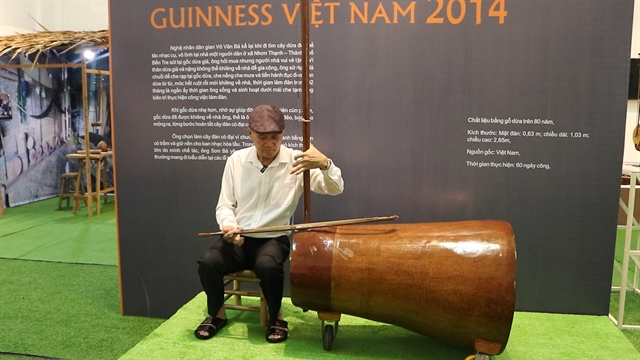

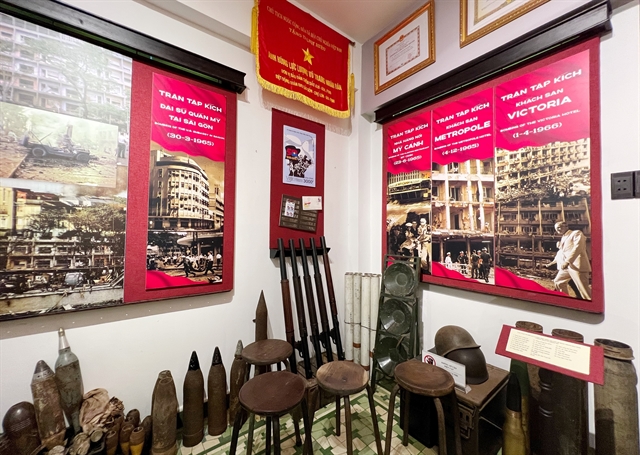





.jpg)




